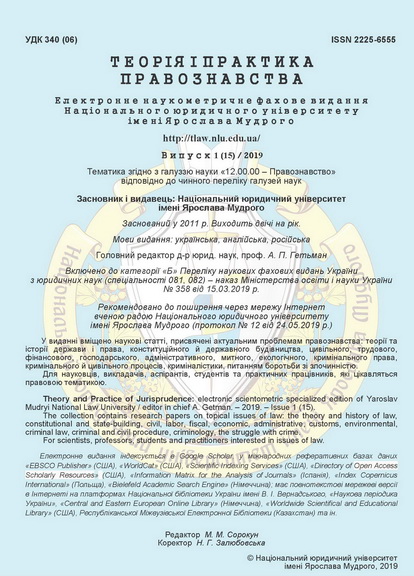Man and Universe
DOI:
https://doi.org/10.21564/2225-6555.2019.15.168742Keywords:
universe, social relations, spiritual creativity, rules of thinking and behavior, picture of the worldAbstract
The knowledge of the Universe is an integral part of understanding of human nature. People can perceive themselves, their nature, essence, relations with other people only through learning and understanding the world, the laws of evolution and existence.
The concept «universe» has specific historical content, which is determined by the state and level of culture, science, technology, social relations, and nature.
The concept of «world» covers the natural and artificial environment, social relations, spiritual world of man, ways and products of spiritual creativity.
A language arms people with the tools to develop the worldview and determines the rules of her thinking and behavior. People shape their thoughts and develop the view of the world, or the whole picture of the world, through the language.
The concept «reality» is considered to be all the things that people can speak about; all classes of objects which exist and surround us or are non-existent and imaginary but still people are able to distinguish and describe them.
The lingual world-image is based on the perception, thinking, and cognition of the world with its following reflection. As the basis of cognition the reflection can be thought to be similar for people who speak different languages.
References
Hajdegger, M. (1992). Vremja kartiny mira. Novaja tehnokraticheskaja volna, 107–108 [in Russian].
Trier, J. (1934). Deutsche Bedeutung sforschung. Germanische Philologie. Ergebnisse und Aufgaben. Festschift für O. Behaghel. Heidelberg, 188–225.
Wartburg, W. con. (1962). Einführung in Problematik und Methodik der Sprachwissenschaft. Tübingen.
Uorf, B.L. (1960). Lingvistika i logika. Novoe v lingvistike, issue 1. Moscow, 183–198 [in Russian].
Öhman, S. (1951). Wortinhalt und Weltbild. Vergleichende und methodologische Studien zu Bedeutungslechre und Wortfeldtheorie. Stockholm, 36–51.
Larochette, J. (1973). La représentation de la réalité. Folia linguistica. Vol. VI. No 12. 177–178.
Brutjan G.A. (1973). Jazyk i kartina mira. Filosofskie nauki, 1, 108–109.
Hallig, R. (1963). Begrieffssystem als Grundlage für die Lexikographie. Berlin.
Karaulov, Ju.N. (1976). Obshhaja i russkaja ideografija. Moscow: Nauka [in Russian].
Stepanov, G.V. (1972). Sovremennye jazykovye sojuzy. Tipologija shodstv i razlichij v gruppe blizkorodstvennyh jazykov. Kishinev, 38–51 [in Russian].
Karaulov, Ju.N. (1981). Lingvisticheskoe konstruirovanie i tezaurus literaturnogo jazyka. Moscow: Nauka [in Russian].
Kandler, G. (1959). Die Lücke im Spachlichen Welbilt. Sprache – Schlüssel zur Welt. Festschrift für L. Weisgerber. Düsseldorf, 264–265.
Fedorenko, N. (1974). Kavabata: vzgljad v prekrasnoe. Inostrannaja literature, 7, 160–165 [in Russian].
Melnikov, G.P. (1974). Tipy oznachaemyh jazykovogo znaka i determinanta. Problemy semantiki. Moscow: Nauka [in Russian]
Lisichenko, L.A. (1991). Konceptual'naja i jazykovaja kartiny mira i ih vzaimodejstvie. Semantika i pragmatika jazykovyh edinic. Kharkov: HGPI im. G. S. Skovorody, 3–9 [in Russian]
Pavlov, I.P. (1951). Polnoe sobranie sochinenij. Vol. 3. Book 2. Moscow – Leningrad: AN SSSR [in Russian].
Serebrennikov, B.A. (1988). Rol chelovecheskogo faktora v jazyke. Jazyk i myshlenie. Moscow : Nauka [in Russian].
Downloads
Published
How to Cite
Issue
Section
License
Copyright (c) 2019 Theory and practice of jurisprudence

This work is licensed under a Creative Commons Attribution 4.0 International License.




